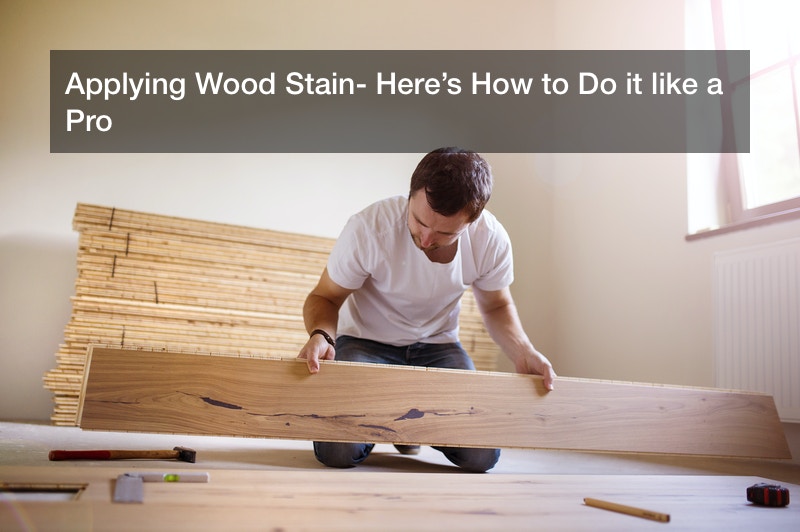
Many woodwork projects receive a finish of exterior wood stain plus a protective coat of clear varnish, unless the wood is top-coated in its natural state or has been painted. Exterior wood stain is especially effective in bringing out the best appearance of top quality hardwoods. Moreover, staining highlights a woodworker’s craftsmanship. Painting, on the other hand, is a great way to conceal blemishes or enhance woods that are less than ideal.
So how do you go about staining a wood surface so you leave it looking perfectly smooth, shiny, and with the exact shade you wanted it to be? Here are a few expert tips to guide you through the process.
Choose the Best Stain for the Job
Selecting an exterior wood stain that’s best suited to the project is the first and most important step to achieving the desired results. Always opt for eco-friendly wood stain. A recent research by Survey Research Institute at Cornell University revealed that 83% of travelers would opt for an allergy-friendly room if they had to choose.
You’ll also need to decide between the hundreds of wood stain colors available in the market. The ideal choice is a color that matches the shade you wish to see after the finish has dried and the sealant applied. Keep in mind that once the stain and varnish have been applied, the color will appear a little darker because of the glossy finish.
Clean and Sand the Wood before Staining
Prior to applying exterior wood stain to a surface, it’s essential to sand the surface with a sand paper. The objective is to make the surface smooth and absorbent. Sand the wood surface lightly following the direction of the grain to avoid scratching the wood.
Once you’ve finished sanding, use a damp cotton cloth to wipe it, removing the wood residue on the surface of the wood. Allow the entire surface to dry before you proceed.
Use a Foam Brush
While applying exterior wood stain, it’s best to use a foam brush instead of bristle paint brush. That’s because wood stains are extremely difficult to get out of a paintbrush. A foam brush can be used once and thrown away once the job is complete.
If you need to wipe away excess liquid between coats, opt for disposable paper towels instead of cloth. This way, you won’t need to worry about extra clean up at the end of the project.
Always Go With the Grain
To apply the exterior wood stain, dip the foam brush into the stain solution and wipe it in the direction of the wood grain. Then go backward against the direction of the grain to allow the color to soak into the wood, leading to a more natural appearance. In case there are any streaks, they’ll end up looking like they’re part of the wood grain.
Apply Two or More Coats
For an even finish, an exterior wood stain needs at least two coats. Once you’ve applied the initial coat, allow it to dry almost completely. Use a paper towel to wipe the surface, removing any excess stain that may have collected in the patches of wood.
Apply a second coat and let it dry before wiping it a second time. Satisfied with the hue yet? If not, try another coat. Always make sure that the previous coat has dried before adding another coat.
Finish Up With a Sealant
To achieve a glossy, deep, and well protected wood surface, you need to seal the surface once it has dried completely. If the exterior wood stain didn’t come with a polyurethane sealant as part of the package, you can purchase one separately. Most local hardware stores have plenty of high quality sealant options to choose from.
Conclusion
Applying exterior wood stain may seem like an easy task, but unless you are careful, you can end up making a huge mess. With some expert guidance and a little attention to detail, however, you can end up with the shiny, attractive wood surface you hoped for in the beginning.

